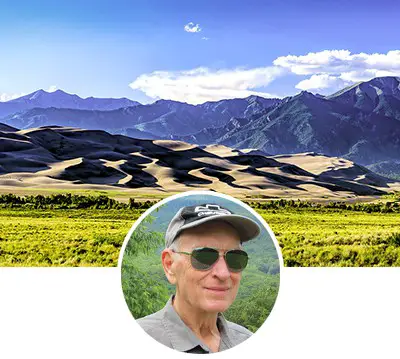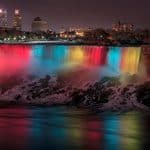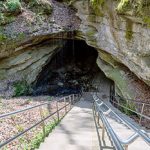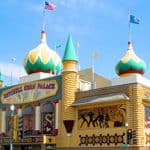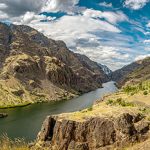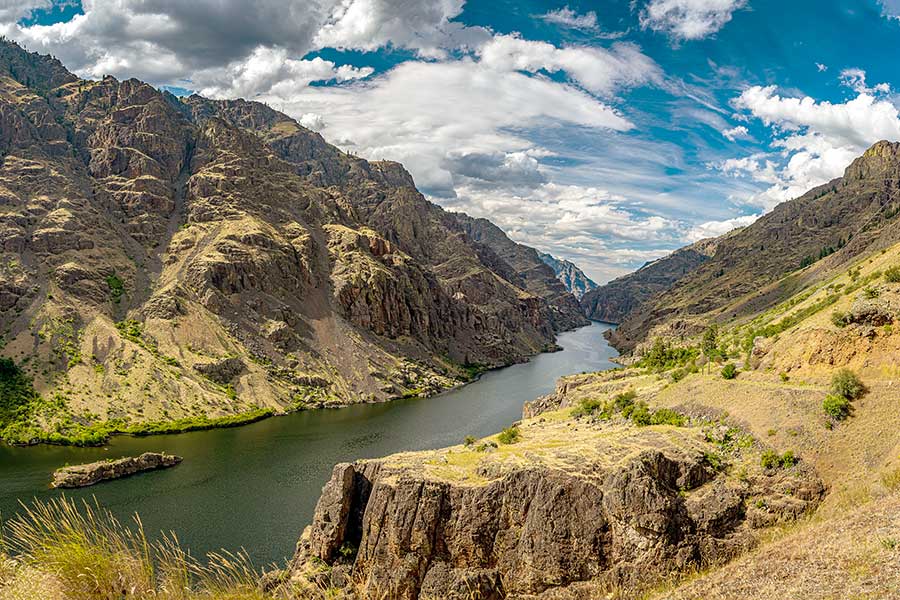
Two of the most prominent canyons that are carved into the United States are the Grand Canyon and Hells Canyon. These two canyons are forever etched into the surface of the earth, descending thousands of feet into the ground, but of these two, which is the deepest?
Hells Canyon is deeper than the Grand Canyon, by almost 2,000 feet. Hells Canyon is 8,043 feet deep at its deepest point, while the Grand Canyon is 6,093 feet. However, at its widest, the Grand Canyon is 18 miles wide, while the widest part of Hells Canyon is 10 miles wide.
Though the powerful force of water cut both these canyons, they are drastically different in their scenery and breadth. Here you will find the details of their comparison and more information on the often-overshadowed Hells Canyon, which provides excellent opportunities for recreational activities ranging from backpacking to whitewater rafting.
Hells Canyon vs. The Grand Canyon
Hells Canyon is located on and creates part of the border between Idaho and Oregon. The canyon’s deepest point begins at the He Devil Peak in Idaho and descends 8,043 feet to the bottom of the canyon, making it deeper than the Grand Canyon.
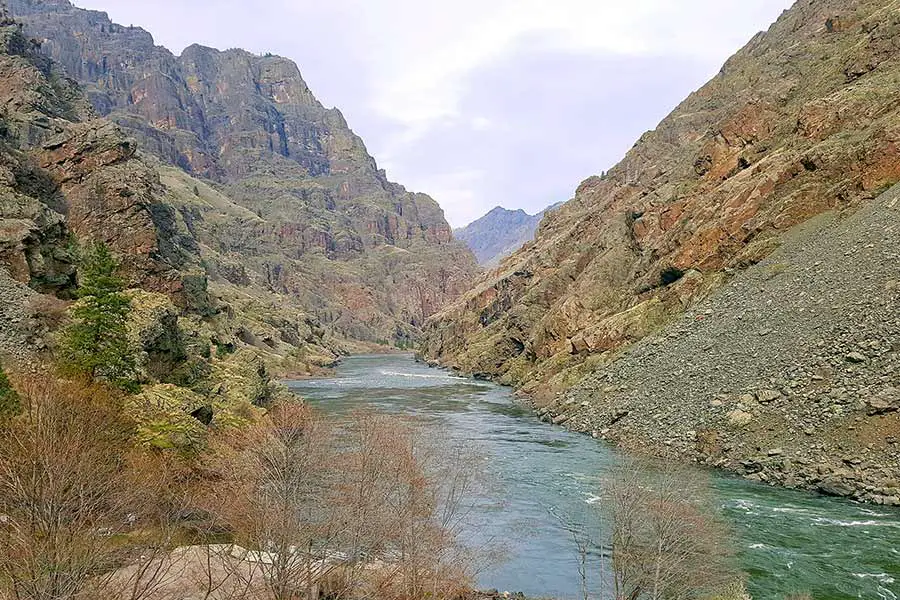
The Hells Canyon area is designated as a national recreation area, containing 652,488 acres of protected land.
The walls of Hells Canyon range from sheer cliffs to small sloping meadows that begin at the river’s edge before drastically transitioning into the steep canyon wall. The canyon sides are adorned with sparse green bushes, tufts of brown grass, and the occasional pine tree.
Meanwhile, the Grand Canyon is in northern Arizona, where the Colorado River makes its way through the bottom of the canyon. The average depth of the canyon is 5,280 feet or a mile, with it being 6,093 at the deepest. So, in addition to being 8 miles wider than Hells Canyon, The Grand Canyon is 277 miles long, 150 miles longer than Hells Canyon.
The steep walls of The Grand Canyon are beautifully layered. Whether you’re overlooking the canyon or looking from the inside of it, it’s easy to see the reddish-brown hues of the different layers of rock.
The north-facing walls that get less sunlight grow plants like the higher elevations of the canyon — Ponderosa Pines, Douglas Firs, and Blue Spruce. The sun-soaked southern-facing walls reflect desert vegetation like succulents, shrubs, and sagebrush.
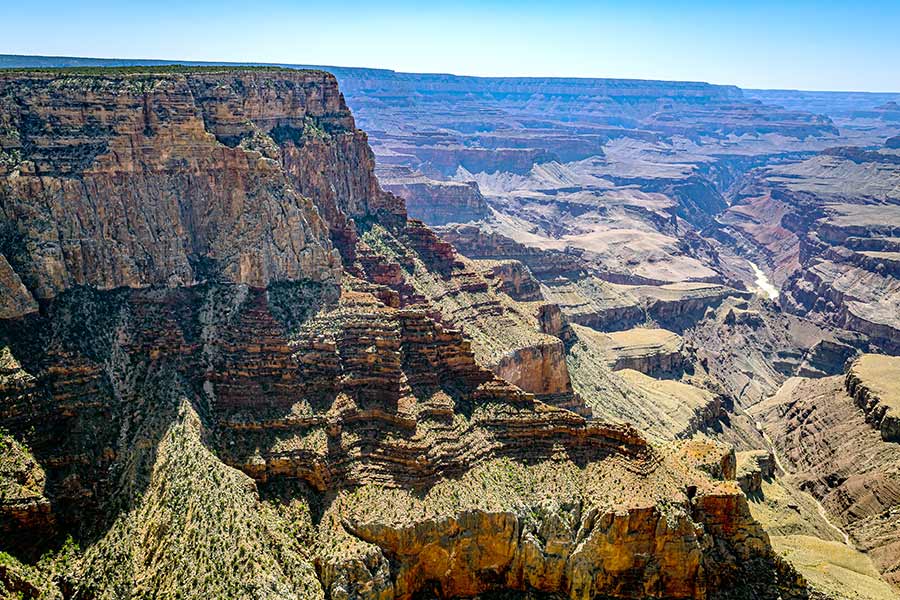
Near the bottom of the Grand Canyon, right next to the river, there are willows, catclaw acacia, and other green plants that love freshwater. Due to the changes in temperature, moisture, and sun exposure, the canyon contains five different ecosystems. Few places in the world provide the opportunity to experience such variety in such a short time.
Of these two canyons, Hells Canyon is much less known than The Grand Canyon, even though it’s deeper. This lack of familiarity might be because the Grand Canyon is much more accessible and covers a larger area. In addition, the Grand Canyon is a national park, which means it has services and transportation more readily available.
Some of these services include:
- Shuttle Busses that are wheelchair accessible
- Scenic drive permits for those not able to hike into the canyon
- Designated parking for scenic outlooks, many of which have railings to give visitors breathtaking views close to the edge safely
- A variety of hotels, lodges, and established campgrounds
- Emergency medical facilities
- Visitor centers where park rangers are available to answer questions.
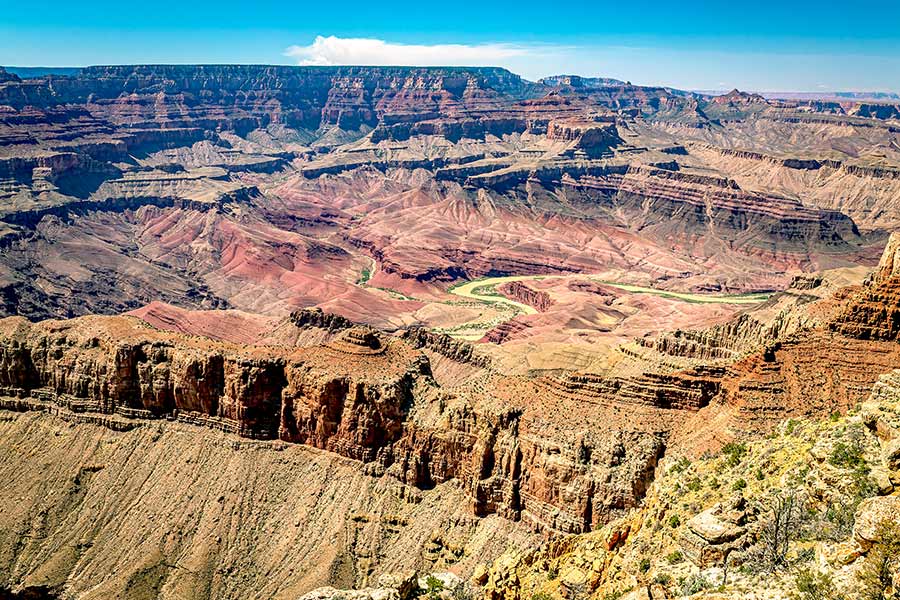
The closest major city to The Grand Canyon is Flagstaff, which is about 80 miles from the east and south entrance stations. Additionally, there are available markets and stores to buy groceries and supplies within the park.
On the other hand, Hell’s Canyon feels much more remote. To get to certain places, you have to charter a jet boat, and there are a few private companies that offer experiences like fishing, camping, rafting, and shuttle services.
Additionally, there are a few vacation rentals, bed and breakfasts, and small lodges to stay at near Hells Canyon:
- Pine Valley Lodge: Halfway, Oregon, about 100 miles from the canyon
- Halfway Motel and RV Park: On the Hells Canyon Scenic Byway, 26 total rooms, 15 RV hookups
- Cornucopia Lodge: around 115 miles from the canyon, 12 miles outside Halfway, Oregon
- Hells Canyon Bed and Breakfast: A relaxing, peaceful stay about 25 miles from the beginning of the canyon
This remoteness appeals to many of Hells Canyon’s visitors. They are looking for a more secluded and rustic experience. Unfortunately, there are no major cities close to the canyon, but there are a few towns. The nearest town is Oxbow, Oregon, which has smaller stores/markets, but very limited lodging.
Road Trip Answers Fun Fact: Evel Knievel attempted to jump across the mile-wide Snake River Canyon on a rocket motorcycle, but the stunt failed when the rocket parachute malfunctioned and deployed early, and Evel and the rocket fell to the bottom of the canyon. Luckily, the rocket motorcycle landed on the riverbank instead of in the river, and Evel fully recovered from the accident. The dirt ramp intended for his landing is still visible outside of Twin Falls, Idaho.
Other Posts of Interest
- Is Mesa Verde Worth Visiting? +Points of Interest
- Which is Better: Yosemite Or Redwood National Park?
- What Is The Difference Between Hilton Head And Myrtle Beach?
- Can You Drive To The Top Of Mount Whitney? Best Time To Visit
What River Goes Through Hells Canyon?
The river that helped create Hells Canyon and that still runs through it is the mighty Snake River. It is the lifeline for many wild animals in the canyon, including big horn sheep and blue heron. Within the river, there are trout, Chinook salmon, and sturgeon.
The Snake River is the largest river in North America that empties into the Pacific Ocean. Within the canyon, the Snake River is commonly 500 feet across in the slower moving parts of the river, but in some places, the river narrows to 100 feet or less, and the river speeds up and creates rapids up to Class V for extreme whitewater rafting. The Snake River is an average of just over 16 feet 4 inches deep.
Is Hells Canyon the Deepest Canyon in the US?
Hells Canyon is the deepest river gorge in North America. However, it is less visited than other canyons like The Grand Canyon.
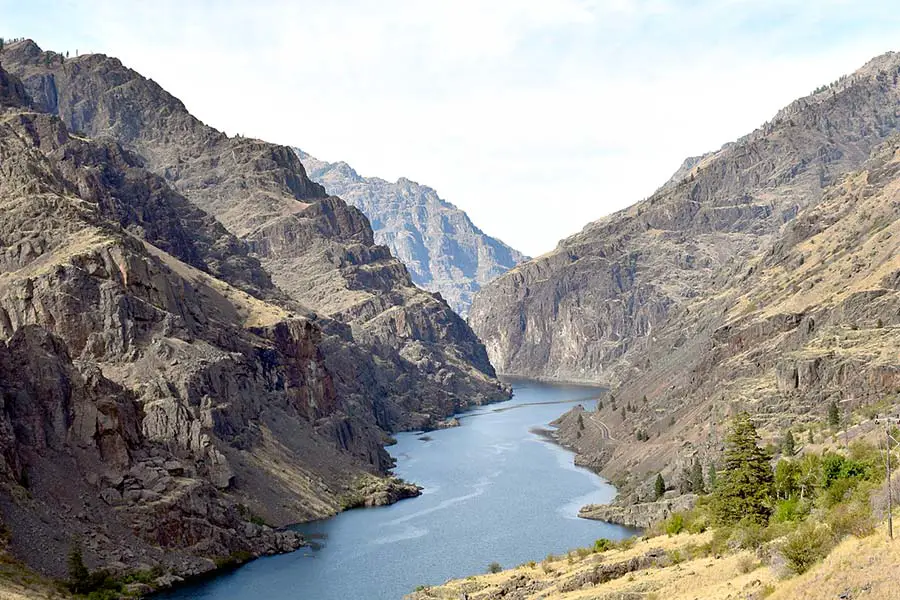
Hells Canyon is one of the most incredible places to experience in the Pacific Northwest, but many of the places in the canyon can only be reached by foot or by boat. Therefore, it is not uncommon to hike in Hells Canyon without seeing many other people.
How Hot Does it Get in Hells Canyon?
Though its name might imply otherwise, it doesn’t get unbearably hot in Hells Canyon. It is hottest in July and August, with a maximum average temperature of 92 in July and 94 in August.
In September and June, the maximum average temperature is a pleasant 82 degrees. However, the average lows in the spring and fall hover between 50-60 degrees and in the mid-60s in the summer.
Are Hells Canyon and the Snake River Canyon the Same
One common misconception is that Hells Canyon and the Snake River Canyon are the same. It is an easy misunderstanding since the Snake River runs through Hells Canyon. However, as the Snake River worked its way across southern Idaho, it created another canyon, the Snake River Canyon. This canyon is much smaller than Hells Canyon, with an average height of 500 feet.
Why Do They Call it Hells Canyon?
Hells Canyon’s name matches its formidable, rugged landscape. The name was first used to describe the canyon in the 1895 book, McCurdy’s Marine History of the Pacific Northwest. The name was then popularized by a local hiking club and solidified by a 1943 book simply titled Hells Canyon.
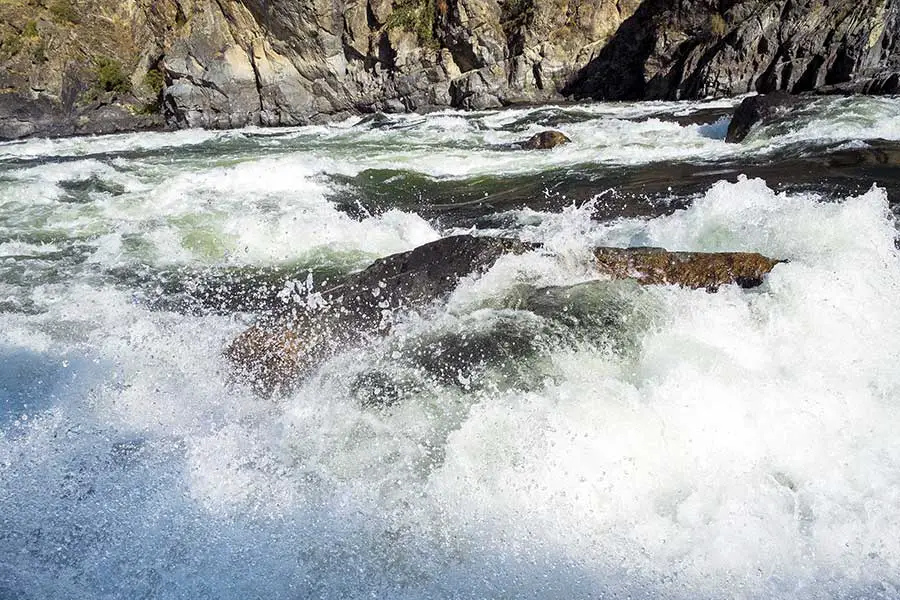
Can You Raft Hells Canyon?
There are great opportunities for whitewater rafting in Hell’s Canyon. Rapids range from Class II to Class V. For visitors desiring to take on the wild rapids of the Snake River but lacking equipment or experience, Hells Canyon Adventures is a great place to start.
They have the option to take a guided tour down the river and ride a jetboat back up, and they also offer a meal, which is not a bad way to explore the deepest gorge in America.
Points of Interest
Not only is Hells Canyon filled with incredible scenery at every turn, but it is also rich in history. Here are a few points of interest:
- Pictographs (paintings on stone) and petroglyphs (carvings in stone) left by the Native Americans who once inhabited Hells Canyon
- The McGaffee Cabin – A historic cabin built in the 1800s that travelers are free to use
- Pittsburg Campground – 28 tent and/or trailer sites, overlooks and has easy access to the Snake River
- Hells Canyon Overlook – a popular spot to see the canyon from above
Do People Live in Hells Canyon?
Currently, no one lives in Hells Canyon. However, there is evidence that people lived in the canyon hundreds of years ago. Rock carvings, paintings, arrowheads, and ancient houses are evidence of the people who once dwelled in Hells Canyon.
A Stunning Piece of History
Hells Canyon is a humbling representation of the power and beauty of nature. It is also steeped in geological and Native American history. Hells Canyon is the perfect place for someone desiring the solace of nature in an uncrowded but magnificent area of the country.

